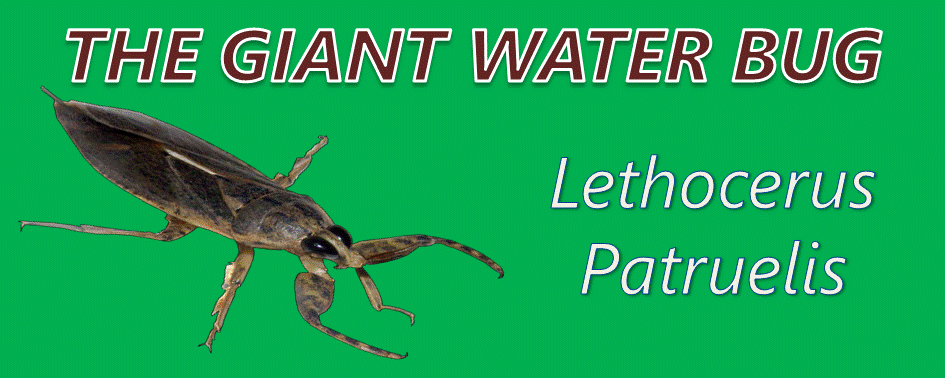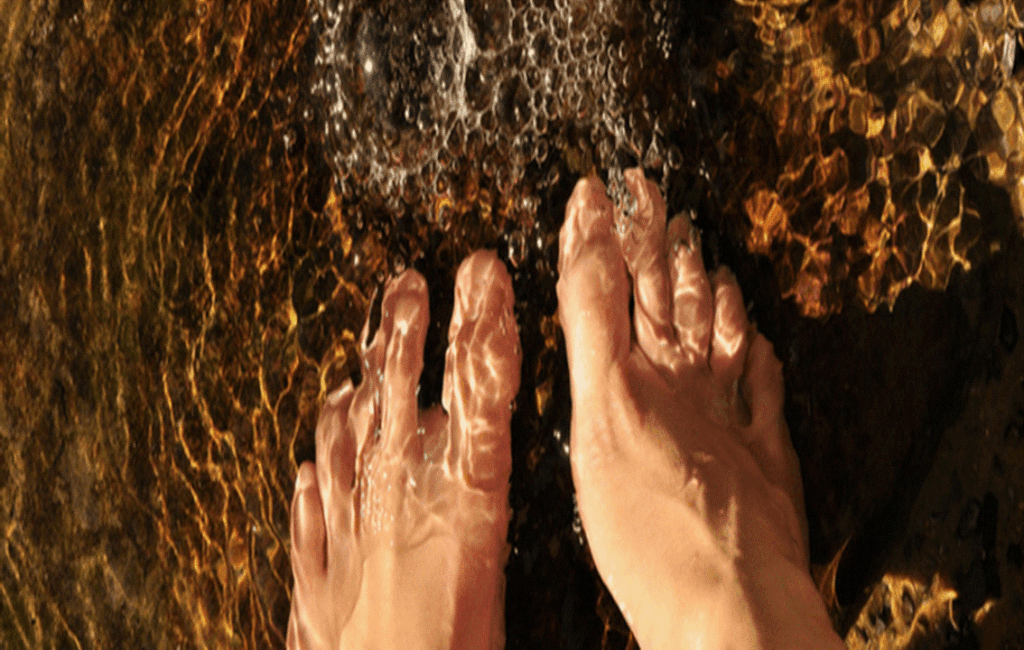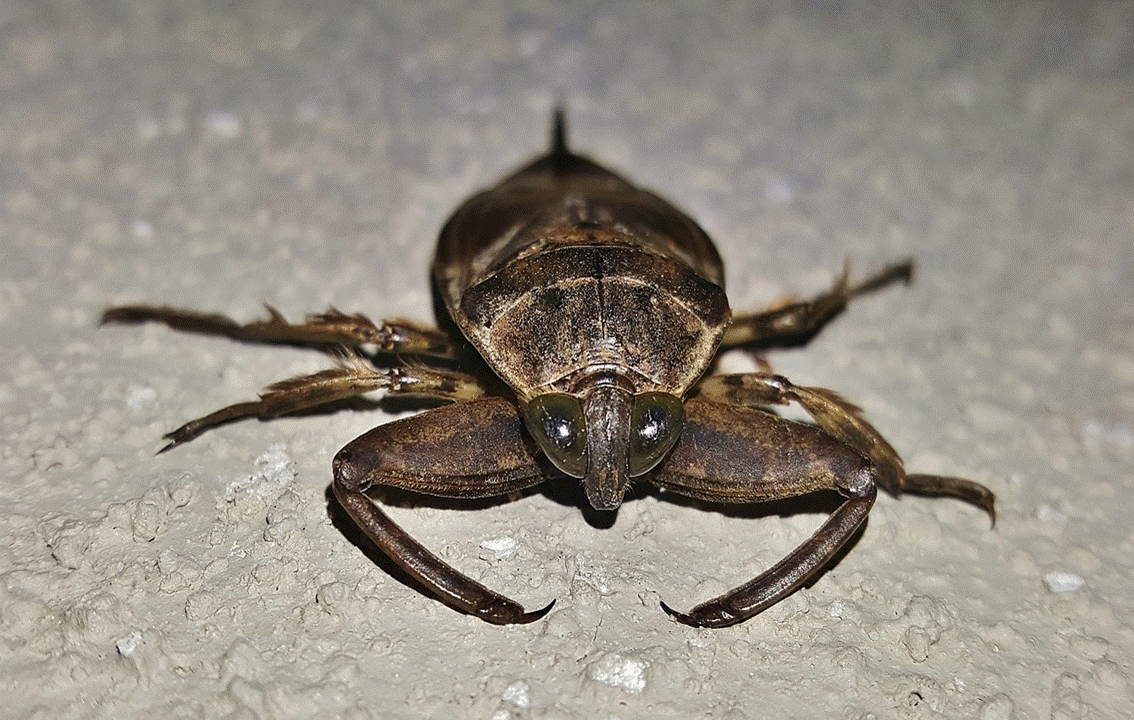
THE EAST COAST'S NEW RESIDENTS
THE GIANT WATER BUG
The Cyprus Wildlife Research Institute has recently confirmed that the Giant Water Bug, known scientifically as the Lethocerus Patruelis, now exists in Cyprus and it is currently active on the east coast of the island. The insect is commonplace in other neighbouring countries in the Mediterranean, but it has never recorded a presence in Cyprus up until now. There are around 150 species of this amphibious insect found throughout the world and it is the largest aquatic insect on Earth. Recent studies claim that it is quite probable that these insects while flying were helped along to the coast of Cyprus by shifting wind and sea patterns.

FOUR INCHES LONG
These aggressive predators usually have a flat elongated body with flattened legs and can measure over 4 inches long in length. They are commonly a variant brown colour and their head features two large compound eyes with short antennae, which they tuck under grooves behind the eyes. The Giant Water Bug does not have any lungs so breathes oxygen through tiny holes throughout its body called spiracles and these deliver oxygen to it directly through air-filled tubes. They also carry air bubbles under their wings that they slowly absorb into their body whilst under water. When oxygen runs out under water, they flip over and swim on their backs, breathing through a short breathing tube, which they retract from their abdomen and this allows them to take in oxygen discreetly from the surface while staying submerged. The Giant Water bug is unlike other large insects because the male usually takes care of the eggs, which once laid are then carried on his back until they hatch.
AVID HUNTERS
The aquatic insects are avid hunters that usually feed on aquatic arthropods, tadpoles, invertebrates, and other amphibians. Some of the larger bugs have been known to hunt small fish, turtles, water snakes and even birds. Their most common hunting technique is to lie motionless at the bottom of a body of water before launching devastating strikes at passing prey. The Giant Water Bug is a remarkably fast swimmer and uses its power and agility to lunge at unsuspecting prey. It then subdues its victim using its two huge frontal apical claws. Its series of circular beak-like mouthparts then pierce the body and it then injects its venomous digestive saliva into its victim. This quickly breaks down the internal tissue of the animal, but in cases of larger prey, this process can take a few hours. The Giant Water Bug then feeds on the liquefied contents of its prey.

RECENT SIGHTINGS
Swimmers on the east coast of Cyprus, who have recently witnessed sightings of the Giant Water Bug, have stated that they were taken aback by the creature’s size and appearance, but they all agreed that that it looked more sinister than it actually was. The Giant Water Bug however, is still notorious for its ferocious bite, which has earned it the alias of ‘Toe-Biter’, but contrary to this, it prefers to avoid human contact and is more likely to play dead when encountering a larger animal including humans. The Giant Water Bug may still strike however, and will bite if provoked. Although the bug’s saliva is not potent enough to cause any harm to humans, it does still produce an extremely painful bite, which causes a distinct red mark which swells dramatically, very similar to a bee sting.
ASIAN CUISINE
A species of Giant Water Bug is a popular delicacy in parts of Asia and they can be found for sale in a number of markets that have street food vendors. The insect is deep fried and is usually served on a stick with some soy or sweet chilli sauce. Like many aquatic insects, it is attracted to lights during its breeding season and these are used to attract to large floating traps on ponds.





We found a large water big in the villa ((Peristerona, Paphos) this morning (19/06/24). It is playing dead now! Can provide image if required.
Yes please supply the photo